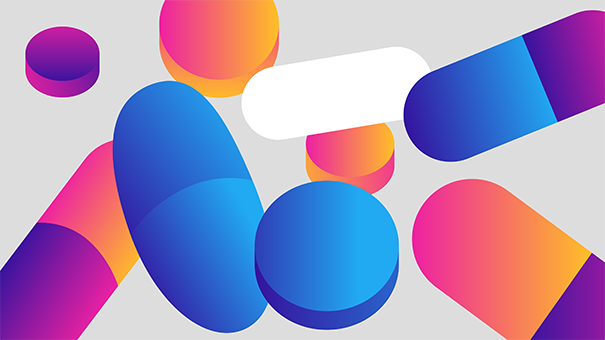What’s in a word? When it comes to the pharmaceutical industry and the word “kickback,” a lot!
In normal, common usage, the word conjures up nothing but negative connotations. Merriam Webster defines a kickback as “a return of a part of a sum received often because of confidential agreement or coercion,” while Wikipedia is even more direct, using the term “bribery” in its definition.
But in the topsy-turvy world of healthcare, one person’s nefarious tactic is another’s much-needed cost-containment measure. Or, to borrow from Facebook’s relationship status choices, when it comes to kickbacks, “it’s complicated”—on a lot of levels.
On January 31, the U.S. Department of Health and Human Services (HHS) issued draft guidelines that, if implemented, would dramatically change the current safe harbor protection under the federal Anti-Kickback Statute (AKS) for Medicare Part D and managed Medicaid prescription drug plans. Here’s a quick look at the changes:
| Pharmaceutical manufacturer rebates: considered to be price discounts—typically based on formulary brand utilization | Current Safe Harbor Rules
|
Proposed Rules |
| Paid retrospectively to Pharmacy Benefit Managers (PBMs) and insurers | Applied at the Point of Sale (POS)—i.e., at the pharmacy counter | |
| Payments ostensibly used to offset total plan costs and lower premium rates across the board | Payments reduce individual consumer’s out-of-pocket cost | |
| Draft guidelines would amend the safe harbor rules to cover only fixed-fee service arrangements between the PBMs and Medicare Part D and managed Medicaid plans. The effective date of these draft guidelines is January 1, 2020, pending the results of the public comment period. | ||
So, who wins (or, perhaps more to the point, who loses)?
Well, again, it’s complicated. The expectation is that applying manufacturer rebates in this manner will have an immediate benefit to those participants with chronic conditions, who require expensive, rebate-eligible brand-name medications on an ongoing basis. In contrast, participants with either acute or chronic conditions who use generic drugs, or who use brand-name drugs that aren’t rebate eligible, will not receive any immediate benefit. So at this level, the proposed rules change will benefit high utilizers of (rebate-eligible) prescription drugs.
But let’s step back from the pharmacy counter. It’s estimated—by outside consultants retained by HHS in drafting these proposed guidelines—that redirecting rebates in this manner will lead to an increase in Medicare Part D premiums of anywhere from $3.20 to $5.64. While not huge dollar amounts, on a percentage basis, it can mean premium increases of 30% or more, depending on the individual. Why? Well, what happens when you squeeze on one side of a balloon? As long as the balloon stays closed, the air doesn’t dissipate: it simply pushes out somewhere else. PBMs and insurers will likely compensate for these “lost” rebate dollars through higher premiums for Medicare Part D and managed Medicaid programs.
To use another metaphor… address one problem—a lack of transparency at the drug counter—you create another.
Of course, employers don’t have to worry about this… right?
It’s true that HHS’ draft guidelines are limited to Medicare and managed Medicaid programs: At this point, they do not directly affect employer-sponsored pharmacy benefit plans. But no one can predict with certainty the twists and turns these draft guidelines will take before they are finalized, nor if and when they will be implemented (January 1, 2020, or at a later date). And HHS Secretary Alex Azar has made it clear that the Trump administration would like to see this same level of transparency in the commercial market.
What is known is that if these draft guidelines are expanded to include employer-sponsored pharmacy benefit plans, or if separate proposed rules are issued by HHS for employer-sponsored plans, there would be a profound change in the economics of the employer-PBM relationship. Currently, most self-funded employer-sponsored plans retain pharmaceutical manufacturer rebates to offset total plan costs and member contributions. Curtailing this practice by amending the safe harbor rules would have a deep impact on employer-sponsored pharmacy benefit plans: again, by making rebate-eligible prescription drugs more affordable to the end consumer, but at what cost to the overall plan (and thus to all plan participants)?
So, what’s a plan sponsor to do?
While the future of these proposed regulations is still uncertain, plan sponsors will continue to be challenged to ensure their participants receive the most efficacious medication for their particular condition: one that looks at the individual’s health, and associated health care costs, holistically. What might seem like an expensive drug in the short-term may save a plan multiples in the longer-term; conversely, a drug that seems to be “the best” medication available to treat a particular condition today, well, it may just be the one with the best rebate.
Our advice to you? Speak with an experienced pharmacy benefit professional: only you, and they, can decide how best to manage your pharmacy benefits.
Paul Burns is the National Pharmacy Practice Leader for Buck in the U.S.
To find out more contact us at 1 866 355 6647 or talktous@buck.com.
